ATi's X800 Pulls Off Another Coup in the Graphics Performance War
The X800 Cards
Visually, the only way to tell the X800 XT apart from the Pro is by taking a close look at the markings on the Samsung memory modules. The Pro uses chips that run at 500 MHz (DDR), while the XT's memory runs at 600 MHz (DDR)
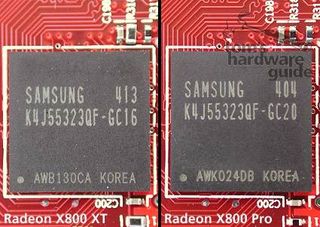
Samsung GDDR3 memory modules. 600 MHz (DDR) Module for the XT Platinum Edition, 500 MHz for the Pro.
At first glimpse, the cooler is reminiscent of that of the Radeon 9800XT. Closer inspection reveals that it is slightly smaller, however, since the heatsink does not additionally cool the memory modules on the X800 series. Thanks to the fact that the chip doesn't produce a large amount of heat, this comparatively moderate cooling solution is completely sufficient. A Radeon 9800XT feels much hotter to the touch, for example.

The voltage regulation circuitry is grouped towards the front of the card.
Thankfully, power consumption has also been reduced in the X800 series. We'll go into this in more detail later on in a separate section of this review. In contrast to NVIDIA's flagship model, both the X800 XT and the X800 Pro require only one auxiliary power connector. The video-in jack next to the Molex power connector is a good idea, letting the user connect a video input to the front of the case.
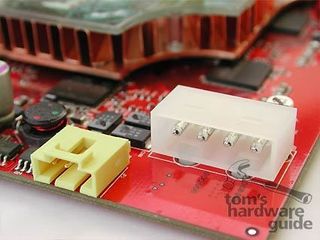
Both the X800 XT and the X800 Pro require only one auxiliary power connector. The yellow jack next to the Molex connector lets you connect a video-in cable that could lead to the front of the case for a front-mounted video-in jack.
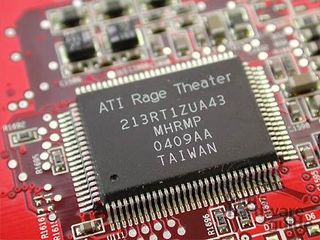
Both cards are ViVo models and offer both video-in and video-out functionality. An ATI Rage Theater chip handles video-in.
Stay on the Cutting Edge
Join the experts who read Tom's Hardware for the inside track on enthusiast PC tech news — and have for over 25 years. We'll send breaking news and in-depth reviews of CPUs, GPUs, AI, maker hardware and more straight to your inbox.
An Overview Of The Two X800 Models
Radeon X800 Pro
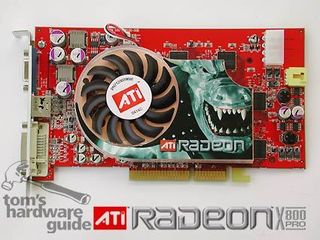
- Official Price: $399
- 12 Pixel Pipelines
- 6 Vertex Shaders
- 160 Mio. Transistors
- 475 MHz Core Frequency
- 450 MHz Memory Frequency
- 256-bit Memory Interface
- GDDR3 Memory
Radeon X800 XT Platinum Edition
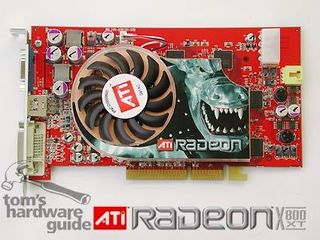
- Official Price: $499
- 16 Pixel Pipelines
- 6 Vertex Shaders
- 160 Mio. Transistors
- 520 MHz Core Frequency
- 560 MHz Memory Frequency
- 256-bit Memory Interface
- GDDR3 Memory
At the last minute, ATi decided to add "Platinum Edition" to the designation of the X800 XT, which means that we will probably see XT versions running at lower frequencies. However, ATi emphasized that the Platinum Edition that we tested here will be available in volume in the form and at the price quoted above.
Most Popular

